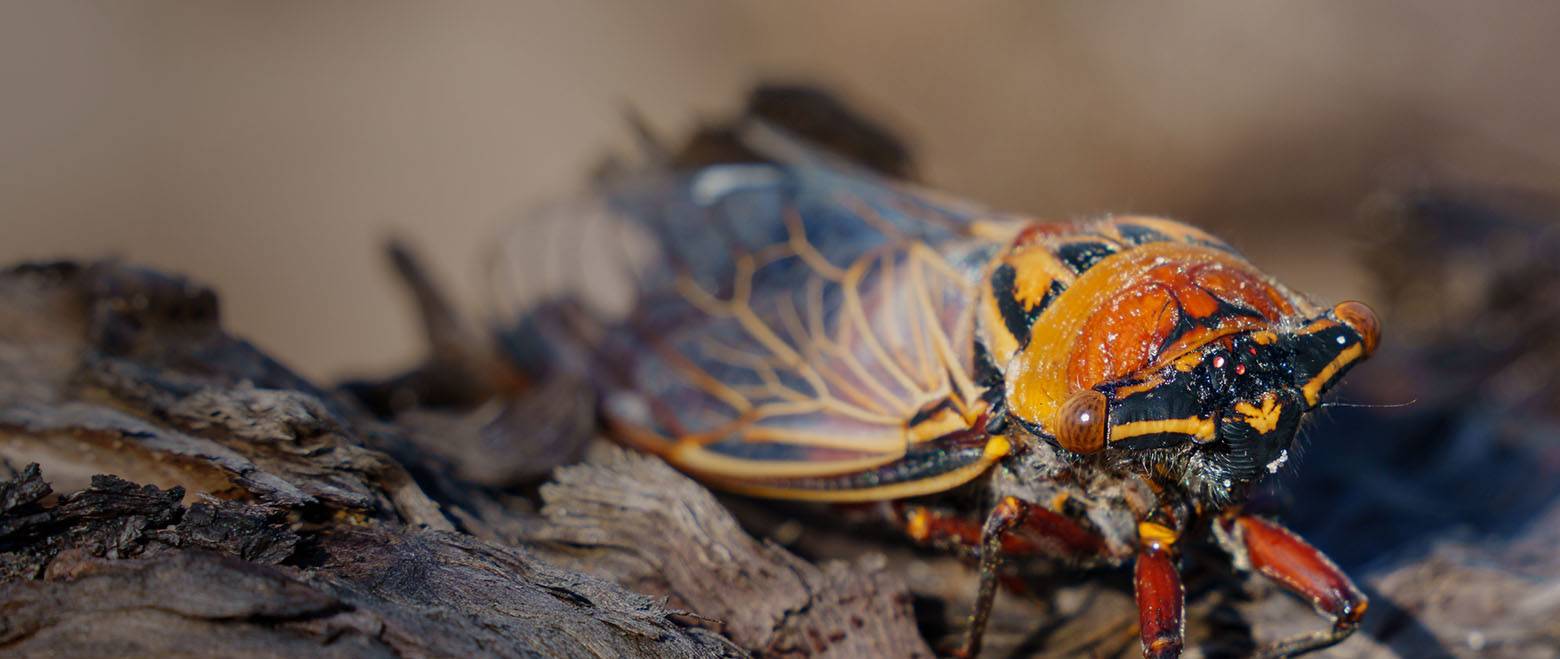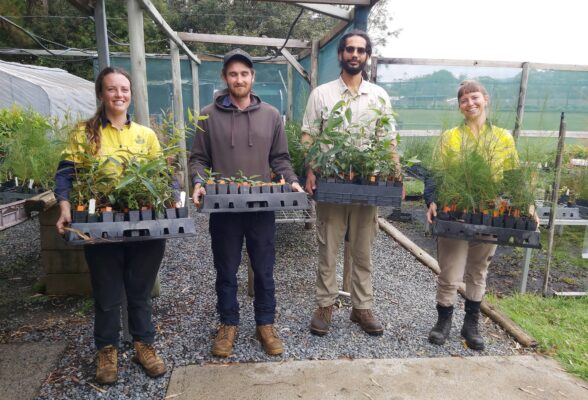
Bushfire Local Economic Recovery Fund Projects in Clarence Valley and Coffs Harbour
The Australian and NSW Government’s are supporting the recovery of bushfire impacted communities through a range of funding programs that support local and regional economic and social recovery – including initiatives across economic, social, built and natural environment recovery. Through the Bushfire Local Economic Recovery Fund (BLERF) Envite have supported communities in the Coffs Harbour and Clarence LGA to recover both economically and socially from the 2019-2020 bushfires.
Two projects “Environmental recovery in Clarence Valley” and “Coffs Coastal Access Repair and Asset Protection Zone Environmental Resilience Improvements” have been designed to provide local youth with employment, training and skill development in Conservation and Ecosystem Management. Between 2021-23 four stages of groups of four entry level environmental workers were employed for approximately 6 month programs, providing opportunity for our next generation of workers.
The teams were involved in land management and strategic program activities including landscaping, environmental rehabilitation, improving natural environment and amenity maintaining the stability of ecosystem processes. The programs improved local employment opportunities with an entry pathway into a growing agriculture, conservation and land management industry in the Clarence and Coffs Coast area. It was aimed to improve ongoing employment opportunities through local community, industry support and effectively developing trainee’s skills and work experience increasing their chances of obtaining ongoing work and transferable skills in the industry within the Coffs and Clarence Valley regions.
The Australian and NSW Government’s are supporting the recovery of bushfire impacted communities through a range of funding programs that support local and regional economic and social recovery – including initiatives across economic, social, built and natural environment recovery. Through the Bushfire Local Economic Recovery Fund (BLERF) Envite have supported communities in the Coffs Harbour and Clarence LGA to recover both economically and socially from the 2019-2020 bushfires.
Two projects “Environmental recovery in Clarence Valley” and “Coffs Coastal Access Repair and Asset Protection Zone Environmental Resilience Improvements” have been designed to provide local youth with employment, training and skill development in Conservation and Ecosystem Management. Between 2021-23 four stages of groups of four entry level environmental workers were employed for approximately 6 month programs, providing opportunity for our next generation of workers.
The teams were involved in land management and strategic program activities including landscaping, environmental rehabilitation, improving natural environment and amenity maintaining the stability of ecosystem processes. The programs improved local employment opportunities with an entry pathway into a growing agriculture, conservation and land management industry in the Clarence and Coffs Coast area. It was aimed to improve ongoing employment opportunities through local community, industry support and effectively developing trainee’s skills and work experience increasing their chances of obtaining ongoing work and transferable skills in the industry within the Coffs and Clarence Valley regions.
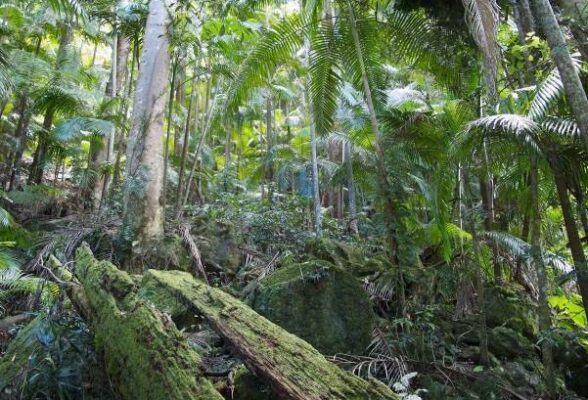
Restoring & Connecting Rainforest Habitat in Wanganui Gorge Stage 2
Wanganui Gorge supports critically endangered lowland rainforest and provides habitat for 28 threatened species.
Threatened fauna recorded on site include the Pouched Frog, Stephen’s Banded Snake, Bush-hen, Albert’s Lyrebird, Wompoo Fruit-Dove, Red-crowned Fruit-Dove, Superb Fruit-Dove, Sooty Owl, Marbled Frogmouth, White-eared Monarch, Red-legged Pademelon, Eastern Tube-nosed Bat, Golden-tipped Bat, Grey-headed Flying-fox, Large-footed Myotis, Little Bent-wing Bat, Eastern Long-eared Bat and Eastern Freshwater Cod.
Threatened flora species include Southern Ochrosia, Arrow-head Vine, Thorny Pea, Ravine Orchid, Red Bopple Nut, Red Lilly Pilly, Rusty Rose Walnut, White Laceflower, Waxy Sarcochilus and Flax Lily.
Weeds, including lantana and climbing asparagus had degraded habitat, restricting natural regeneration and blocking movement of fauna. Systematic control of weeds is facilitating natural regeneration and improving condition and connectivity of lowland rainforest and habitat for threatened species.
Envite Environment has been undertaking ecological restoration works in Wanganui Gorge for over 14 years and has been instrumental in transforming dense areas of lantana and other weeds to lowland rainforest through assisted natural regeneration. Lantana had infested areas for over 40 years effectively blocking rainforest from regenerating in this resilient area and identified wildlife and climate change corridor.
Methods used for bush regeneration are recognised best practice as accepted by organisations including the Australian Association of Bush Regenerators (AABR), National Trust and Greening Australia. A Restoration Action Plan has been developed and guides ecological restoration works.
Wanganui Gorge supports critically endangered lowland rainforest and provides habitat for 28 threatened species.
Threatened fauna recorded on site include the Pouched Frog, Stephen’s Banded Snake, Bush-hen, Albert’s Lyrebird, Wompoo Fruit-Dove, Red-crowned Fruit-Dove, Superb Fruit-Dove, Sooty Owl, Marbled Frogmouth, White-eared Monarch, Red-legged Pademelon, Eastern Tube-nosed Bat, Golden-tipped Bat, Grey-headed Flying-fox, Large-footed Myotis, Little Bent-wing Bat, Eastern Long-eared Bat and Eastern Freshwater Cod.
Threatened flora species include Southern Ochrosia, Arrow-head Vine, Thorny Pea, Ravine Orchid, Red Bopple Nut, Red Lilly Pilly, Rusty Rose Walnut, White Laceflower, Waxy Sarcochilus and Flax Lily.
Weeds, including lantana and climbing asparagus had degraded habitat, restricting natural regeneration and blocking movement of fauna. Systematic control of weeds is facilitating natural regeneration and improving condition and connectivity of lowland rainforest and habitat for threatened species.
Envite Environment has been undertaking ecological restoration works in Wanganui Gorge for over 14 years and has been instrumental in transforming dense areas of lantana and other weeds to lowland rainforest through assisted natural regeneration. Lantana had infested areas for over 40 years effectively blocking rainforest from regenerating in this resilient area and identified wildlife and climate change corridor.
Methods used for bush regeneration are recognised best practice as accepted by organisations including the Australian Association of Bush Regenerators (AABR), National Trust and Greening Australia. A Restoration Action Plan has been developed and guides ecological restoration works.
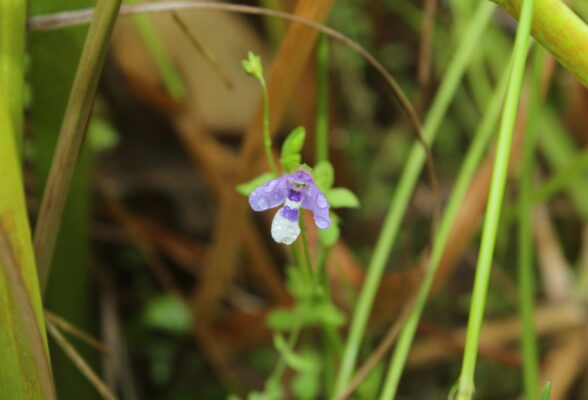
Conserving Ecosystems and Environmental Assets on Private Property in the Clarence Valley
Private landholders play a key role in nature conservation because large portions of native vegetation and wildlife habitat, and many threatened and endangered species are located on private properties.
Private landowners who have entered in private land conservation agreement with the Biodiversity Conservation Trust (BCT) have received funding through their Conservation Partners Program to actively manage biodiversity and native vegetation on their land. Envite have been working with a number of different landowners across the Clarence Valley LGA to implement Ecological Restoration to conserve biodiversity and support productive landscapes.
The objective of works is to improve and protect the quality of ecosystems and environmental assets on private property.
Environmental restoration practitioners have been methodically managing the presence of highly threatening weed species in degraded areas of significant conservation value. This includes the control of weeds Lantana and Cats Claw Creeper. Weeds have been managed strategically with an awareness of forest dynamics, utilising management techniques that are ecologically relevant to the landscape context. Adaptability is required from site to site with techniques applied in regard to the ecosystems condition and resilience.
Private landholders play a key role in nature conservation because large portions of native vegetation and wildlife habitat, and many threatened and endangered species are located on private properties.
Private landowners who have entered in private land conservation agreement with the Biodiversity Conservation Trust (BCT) have received funding through their Conservation Partners Program to actively manage biodiversity and native vegetation on their land. Envite have been working with a number of different landowners across the Clarence Valley LGA to implement Ecological Restoration to conserve biodiversity and support productive landscapes.
The objective of works is to improve and protect the quality of ecosystems and environmental assets on private property.
Environmental restoration practitioners have been methodically managing the presence of highly threatening weed species in degraded areas of significant conservation value. This includes the control of weeds Lantana and Cats Claw Creeper. Weeds have been managed strategically with an awareness of forest dynamics, utilising management techniques that are ecologically relevant to the landscape context. Adaptability is required from site to site with techniques applied in regard to the ecosystems condition and resilience.
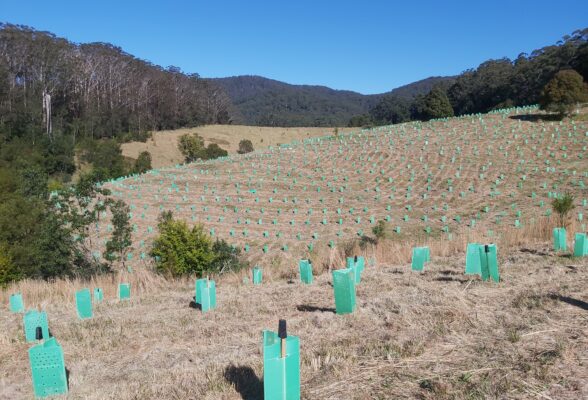
Restoring Priority Koala Habitat on the NSW North Coast
This project requires bush regeneration and revegetation works within the Coffs Harbour – North Bellingen Areas of Regional Koala Significance (ARKS) as part of the Regional Land Partnerships Program protecting Koalas of the North Coast of NSW. The project is partnering with landowners, local government, and NSW government agencies to protect and restore priority koala habitat in selected ARKS in the north coast region of NSW.
This project requires bush regeneration and revegetation works within the Coffs Harbour – North Bellingen Areas of Regional Koala Significance (ARKS) as part of the Regional Land Partnerships Program protecting Koalas of the North Coast of NSW. The project is partnering with landowners, local government, and NSW government agencies to protect and restore priority koala habitat in selected ARKS in the north coast region of NSW.
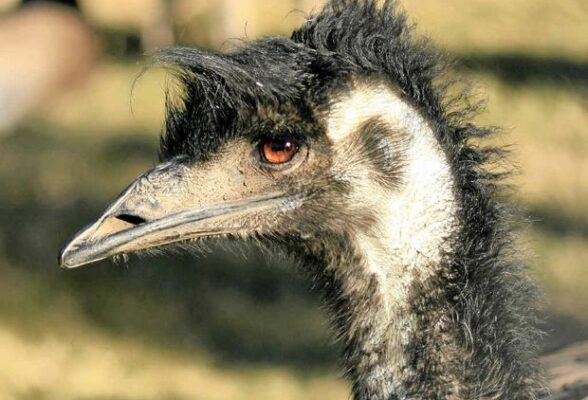
Community Conservation of the Emu in the Bungawalbin Stage 2
The emu population in the NSW North Coast bioregion is endangered with likely less than 50 individuals remaining. Threats include extinctions caused by habitat fragmentation and isolated populations. Degradation of habitat by weeds (blocking movement of emus) and impacts of fires have contributed to recent range contraction and declines in abundance. Predation by feral dogs, pigs and foxes is a major threat. Vehicle strike has also been a major source of death on the NSW North Coast.
Recovery actions being addressed include restoring emu habitat through systematic weed control; vertebrate pest control and raising awareness of emu conservation and managing threats to increase participation in emu protection. The project involves a partnership between Envite Environment and Minyumai Indigenous bush regenerators. The two teams work together to restore emu habitat across NSW National Parks Reserves and private properties in the Bungawalbin area.
The emu population in the NSW North Coast bioregion is endangered with likely less than 50 individuals remaining. Threats include extinctions caused by habitat fragmentation and isolated populations. Degradation of habitat by weeds (blocking movement of emus) and impacts of fires have contributed to recent range contraction and declines in abundance. Predation by feral dogs, pigs and foxes is a major threat. Vehicle strike has also been a major source of death on the NSW North Coast.
Recovery actions being addressed include restoring emu habitat through systematic weed control; vertebrate pest control and raising awareness of emu conservation and managing threats to increase participation in emu protection. The project involves a partnership between Envite Environment and Minyumai Indigenous bush regenerators. The two teams work together to restore emu habitat across NSW National Parks Reserves and private properties in the Bungawalbin area.
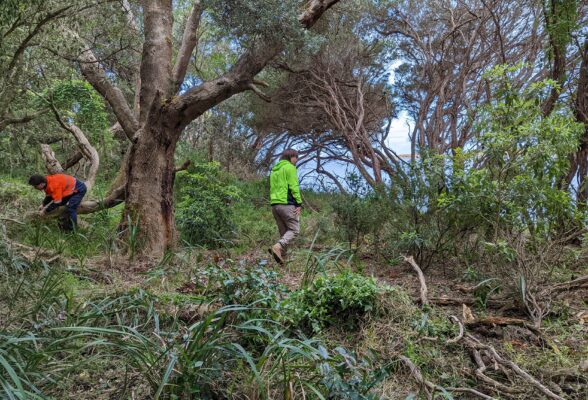
East Gippsland School-based Traineeships Program
Youth disengagement in East Gippsland was exacerbated by the 2019/20 bushfires and COVID-19 pandemic, and stands to have lasting negative impacts on community recovery, capacity and wellbeing. As of November 2021, the Gippsland region had the highest rates of disengaged youth in Victoria. One in five (19%) young people aged 18-24 were not engaged in formal work or study, and youth unemployment is on the increase. Moreover, Gippsland has higher early school leaver rates and lower levels of higher education attainment than the Victorian average.
Fewer tertiary education and vocational training opportunities, poor transport infrastructure, social disadvantage, and inter-generational unemployment contribute to heightened youth disengagement in East Gippsland’s remote communities, such as Swifts Creek, Orbost, Cann River and Mallacoota. Furthermore, the winding down of native forest logging in the region has, and continues to, lead to a loss of rural employment opportunities.
Young people who lack clear pathways to employment in their communities, have few incentives to stay local, or to attend and complete school. There is a pressing need to create novel skills development and employment pathways that engage and improve the future prospects of young people living in East Gippsland’s remote regional communities.
In 2022, Envite and partners pioneered a novel school-based traineeship program that simultaneously addresses youth disengagement while building community capacity and support for bushfire recovery in East Gippsland.
Youth disengagement in East Gippsland was exacerbated by the 2019/20 bushfires and COVID-19 pandemic, and stands to have lasting negative impacts on community recovery, capacity and wellbeing. As of November 2021, the Gippsland region had the highest rates of disengaged youth in Victoria. One in five (19%) young people aged 18-24 were not engaged in formal work or study, and youth unemployment is on the increase. Moreover, Gippsland has higher early school leaver rates and lower levels of higher education attainment than the Victorian average.
Fewer tertiary education and vocational training opportunities, poor transport infrastructure, social disadvantage, and inter-generational unemployment contribute to heightened youth disengagement in East Gippsland’s remote communities, such as Swifts Creek, Orbost, Cann River and Mallacoota. Furthermore, the winding down of native forest logging in the region has, and continues to, lead to a loss of rural employment opportunities.
Young people who lack clear pathways to employment in their communities, have few incentives to stay local, or to attend and complete school. There is a pressing need to create novel skills development and employment pathways that engage and improve the future prospects of young people living in East Gippsland’s remote regional communities.
In 2022, Envite and partners pioneered a novel school-based traineeship program that simultaneously addresses youth disengagement while building community capacity and support for bushfire recovery in East Gippsland.
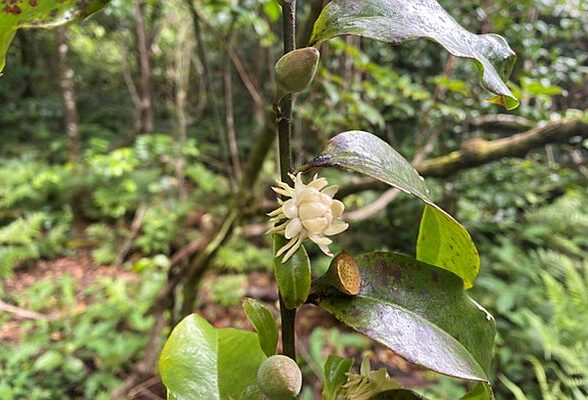
Harnessing Genetics to Restore Threatened Flora Resilience
East Gippsland, Victoria, is unique in terms its natural environments and biodiversity. Approximately three quarters of the land area comprises national parks and other public land reserves, and there are 125 species that rely on East Gippsland for 50-100% of their recorded range. Thirty percent of these species occur nowhere else on Earth.
Despite the importance of East Gippsland for biodiversity, surprisingly little environmental research has been undertaken in support of on-ground efforts to conserve, maintain and restore species and ecosystems in the region. Over 100 plant species in East Gippsland are listed as vulnerable or endangered at the national- or state-level, while the status of a further 90 remains uncertain. Many of these plants exist as small and/or localised populations and, for a great majority, their known distributions were severely burnt in the 2019/20 bushfires.
East Gippsland, Victoria, is unique in terms its natural environments and biodiversity. Approximately three quarters of the land area comprises national parks and other public land reserves, and there are 125 species that rely on East Gippsland for 50-100% of their recorded range. Thirty percent of these species occur nowhere else on Earth.
Despite the importance of East Gippsland for biodiversity, surprisingly little environmental research has been undertaken in support of on-ground efforts to conserve, maintain and restore species and ecosystems in the region. Over 100 plant species in East Gippsland are listed as vulnerable or endangered at the national- or state-level, while the status of a further 90 remains uncertain. Many of these plants exist as small and/or localised populations and, for a great majority, their known distributions were severely burnt in the 2019/20 bushfires.
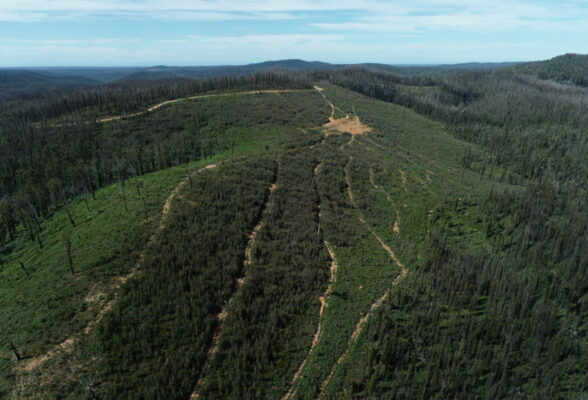
Restoring Nutritional Landscapes
Disturbance from logging and fire has drastically altered forest distribution and composition in south-eastern Australia, leading to widespread loss of ecological function and biodiversity. In Victoria alone, 115,000 ha of known or likely threatened species habitat was logged from 2005-2020. Silvertop Ash (Eucalyptus sieberi) is a disturbance-adapted native eucalypt species that is increasingly dominating these areas. Unfortunately, Silvertop has high levels of herbivore deterring toxins and is a poor-quality food source for Australia’s most iconic eucalyptus leaf-eating mammals, greater gliders (Petauroides volans) and koalas (Phascolarctos cinereus). In addition to decreasing the nutritional quality of forests for these animals, disturbance-related proliferation of Silvertop Ash is causing substantial reductions in overall biodiversity and landscape resilience.
In 2021, Envite partnered with the Australian National University (ANU) on an ambitious project aiming to reverse the cumulative impacts of logging and fire on eucalyptus tree species diversity in East Gippsland forests, with a focus on restoring and improving greater glider habitat. Together, we established a series of forty 0.25 ha experimental plots (10 ha in total) to develop and refine methods for future upscaling across the landscape, using a previously logged (~3 years prior) Immediate Protection Area that burned in the 2019/20 bushfires as a case study.
The methods being trialed include:
- Ecological thinning of Silvertop Ash;
- Silvertop thinning plus supplementary seeding of more diverse, locally appropriate eucalyptus tree species with a focus on improving the nutritional landscape for greater gliders;
- Thinning and supplementary planting of the same, locally-appropriate eucalyptus tree species; and
- Control sites with no intervention, used to assess the efficacy of our actions against ‘business as usual’.
Disturbance from logging and fire has drastically altered forest distribution and composition in south-eastern Australia, leading to widespread loss of ecological function and biodiversity. In Victoria alone, 115,000 ha of known or likely threatened species habitat was logged from 2005-2020. Silvertop Ash (Eucalyptus sieberi) is a disturbance-adapted native eucalypt species that is increasingly dominating these areas. Unfortunately, Silvertop has high levels of herbivore deterring toxins and is a poor-quality food source for Australia’s most iconic eucalyptus leaf-eating mammals, greater gliders (Petauroides volans) and koalas (Phascolarctos cinereus). In addition to decreasing the nutritional quality of forests for these animals, disturbance-related proliferation of Silvertop Ash is causing substantial reductions in overall biodiversity and landscape resilience.
In 2021, Envite partnered with the Australian National University (ANU) on an ambitious project aiming to reverse the cumulative impacts of logging and fire on eucalyptus tree species diversity in East Gippsland forests, with a focus on restoring and improving greater glider habitat. Together, we established a series of forty 0.25 ha experimental plots (10 ha in total) to develop and refine methods for future upscaling across the landscape, using a previously logged (~3 years prior) Immediate Protection Area that burned in the 2019/20 bushfires as a case study.
The methods being trialed include:
- Ecological thinning of Silvertop Ash;
- Silvertop thinning plus supplementary seeding of more diverse, locally appropriate eucalyptus tree species with a focus on improving the nutritional landscape for greater gliders;
- Thinning and supplementary planting of the same, locally-appropriate eucalyptus tree species; and
- Control sites with no intervention, used to assess the efficacy of our actions against ‘business as usual’.
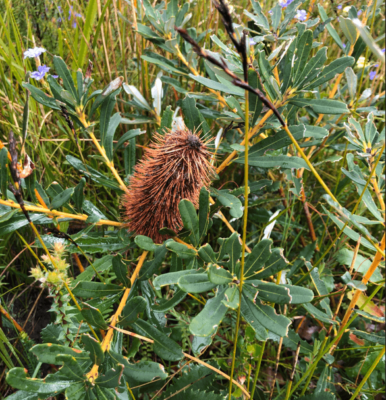
Community-led Recovery of the Gippsland Banksia and Betka Bottlebrush
The Gippsland Banksia (Banksia croajingolensis) is known only from a single drainage line South of Shipwreck Creek in the Croajingolong National Park, a site that was severely burnt in the 2019/2020 megafires. Very little is known about the biology of B. croajingolensis. There is even a question about its origin, with Flora of Victoria suggesting that it may be a hybrid between other species with which it co-occurs.
The Betka Bottlebrush (Callistemon kenmorrisonii) is one of a handful of rare and endemic Callistemons restricted to Far East Gippsland. C. kenmorrisonii is only known from two small populations growing on granite rock bars along the upper Betka River, one where the river intersects Stony Peak Road and one at Roger Track, in Wingan State Forest. Both populations were severely burned in the 2019/2020 Black Summer Bushfires, and have since also been impacted by numerous flooding events following abnormally high rainfall in the years following the fires. There are unanswered questions as to the origin of C. kenmorrisonii, with suggestions that the species may be a hybrid swarm involving C. citrinus and C. subulatus.
The Gippsland Banksia (Banksia croajingolensis) is known only from a single drainage line South of Shipwreck Creek in the Croajingolong National Park, a site that was severely burnt in the 2019/2020 megafires. Very little is known about the biology of B. croajingolensis. There is even a question about its origin, with Flora of Victoria suggesting that it may be a hybrid between other species with which it co-occurs.
The Betka Bottlebrush (Callistemon kenmorrisonii) is one of a handful of rare and endemic Callistemons restricted to Far East Gippsland. C. kenmorrisonii is only known from two small populations growing on granite rock bars along the upper Betka River, one where the river intersects Stony Peak Road and one at Roger Track, in Wingan State Forest. Both populations were severely burned in the 2019/2020 Black Summer Bushfires, and have since also been impacted by numerous flooding events following abnormally high rainfall in the years following the fires. There are unanswered questions as to the origin of C. kenmorrisonii, with suggestions that the species may be a hybrid swarm involving C. citrinus and C. subulatus.
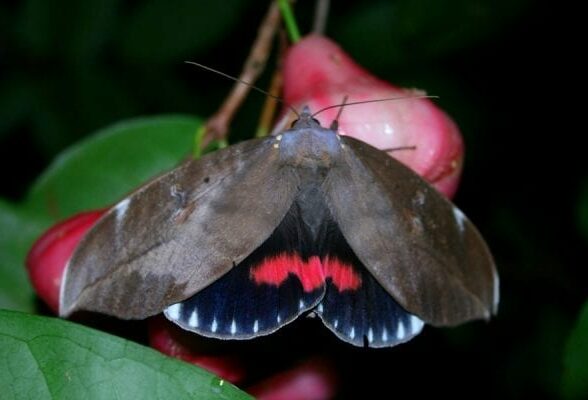
Southern Pink Underwing Moth Habitat Restoration
The Southern Pink Underwing Moth (Phyllodes imperialis smithersi) and its food plant Carronia multisepalea stronghold occurs in critically endangered Lowland Rainforest of Subtropical Australia the Northern Rivers regions of NSW.
This project supports professional bush regenerators to systematically control weeds degrading rainforest at 11 sites where Carronia multisepalea and Southern Pink Underwing Moth larva are known to occur.
Project partners include NSW National Parks and Wildlife Service, Traditional Owners, Rous County Council, Big Scrub Landcare and the local community.
Project sites are areas of high biodiversity and conservation significance including World Heritage listed Nightcap National Park and Big Scrub Rainforest remnants.
The Southern Pink Underwing Moth (Phyllodes imperialis smithersi) and its food plant Carronia multisepalea stronghold occurs in critically endangered Lowland Rainforest of Subtropical Australia the Northern Rivers regions of NSW.
This project supports professional bush regenerators to systematically control weeds degrading rainforest at 11 sites where Carronia multisepalea and Southern Pink Underwing Moth larva are known to occur.
Project partners include NSW National Parks and Wildlife Service, Traditional Owners, Rous County Council, Big Scrub Landcare and the local community.
Project sites are areas of high biodiversity and conservation significance including World Heritage listed Nightcap National Park and Big Scrub Rainforest remnants.
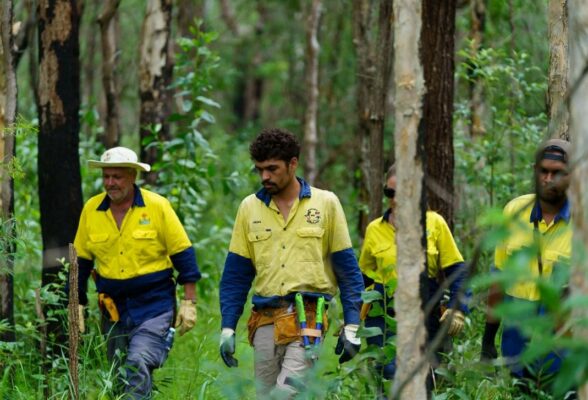
Bushfire Local Economic Recovery Fund: Bungawalbin Community Bushfire Recovery
The bushfires of 2019-2020 burnt through almost the entire Bungwalbin area in Richmond Valley LGA devastating the local community and habitat for threatened species and ecological communities.
The Bungawalbin Community Bushfire Recovery Project is supporting ecological restoration, employment and strengthening community resilience through implementation of bushfire recovery activities across public and private land. The project involves a partnership between the local community, Bungawalbin Landcare, Bandjalang Traditional Owners and NSW National Parks and Wildlife Service.
The bushfires of 2019-2020 burnt through almost the entire Bungwalbin area in Richmond Valley LGA devastating the local community and habitat for threatened species and ecological communities.
The Bungawalbin Community Bushfire Recovery Project is supporting ecological restoration, employment and strengthening community resilience through implementation of bushfire recovery activities across public and private land. The project involves a partnership between the local community, Bungawalbin Landcare, Bandjalang Traditional Owners and NSW National Parks and Wildlife Service.
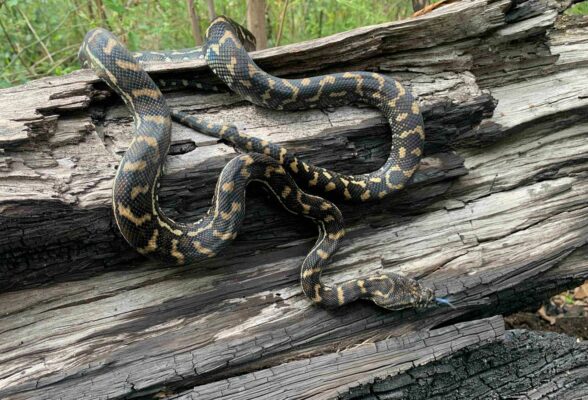
Bungwalbin Bushfire Recovery for Wildlife and Habitat
In 2019/20, fire burnt through 98% of the 12,250 ha Bungwalbin group of 7 NSW National Park Reserves in in north-eastern NSW impacting habitat for a range of threatened species and ecological communities. Envite, along with its partners, were tasked with undertaking recovering works to restore native habitats.
In 2019/20, fire burnt through 98% of the 12,250 ha Bungwalbin group of 7 NSW National Park Reserves in in north-eastern NSW impacting habitat for a range of threatened species and ecological communities. Envite, along with its partners, were tasked with undertaking recovering works to restore native habitats.
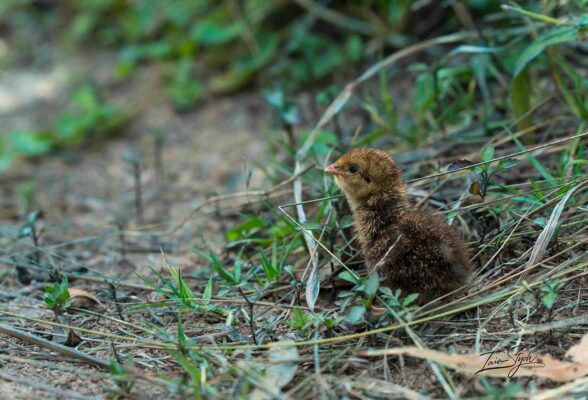
Clarence River Rehabilitation
The State Government engaged Envite to undertake restoration and revegetation works along 7kms of riverbank across 22 properties on the Clarence River. These works support instream revetment works for long term erosion control.
The State Government engaged Envite to undertake restoration and revegetation works along 7kms of riverbank across 22 properties on the Clarence River. These works support instream revetment works for long term erosion control.
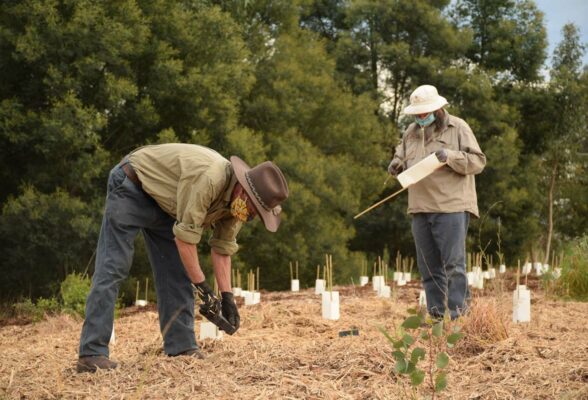
Gippsland Drought Employment Program
Following more than three years of damaging drought conditions in the East Gippsland region, the State Government funded the Gippsland Drought Employment program to provide flexible, temporary employment for farmers and individuals from related industries, to provide cashflow during the drought and to support community centred natural resource management (NRM) works.
The main objective of the program was to provide employment for drought impacted community members in need. The program eligibility was extended to include bushfire impacted individuals following catastrophic bushfires in East Gippsland in 2019/20.
Following more than three years of damaging drought conditions in the East Gippsland region, the State Government funded the Gippsland Drought Employment program to provide flexible, temporary employment for farmers and individuals from related industries, to provide cashflow during the drought and to support community centred natural resource management (NRM) works.
The main objective of the program was to provide employment for drought impacted community members in need. The program eligibility was extended to include bushfire impacted individuals following catastrophic bushfires in East Gippsland in 2019/20.

